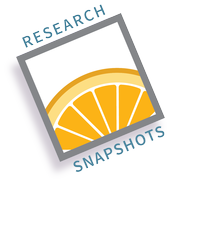A collaborative approach between academics, growers and agrochemical industry to discover, develop and commercialize therapies for citrus Huanlgongbing (HLB)

Research by: Dr. Denise Manker, Biologics at Bayer Crop Science.
Article written by: Denise MankerArticle edited by: Ozgur Batuman, Ed Stover, Lukasz Stelinski, Peggy G. Lemaux
Article edited by: Peggy G. Lemaux, Ed Stover, Lukasz Stelinski
What is the technique?
A screening cascade has been developed and validated with lab, greenhouse, and field tests to identify potential therapies with activity on HLB in citrus plants, as well as including development of HLB detection methods using metabolomics as an alternative to qPCR. This cascade has been used to test microbial strains and synthetic plant defense compounds that switch on the citrus trees’ immune system as well as other leads from start-up companies and other research groups. The goal of this research is to sift through many candidate therapies to find specific molecules and microbial strains that could be advanced towards registration for field application to improve health and yield of citrus trees with HLB.
Using this screening cascade, what has been discovered?
The screening cascade is used to evaluate leads from collaborators and external parties. One new class of synthetic chemistry that turns on the citrus tree defense system has been demonstrated to significantly delay disease symptoms in the greenhouse and, based on qPCR, shows promise in two field trials (Figure 1). Confirmation is currently underway using analysis of citrus tree metabolites indicative of HLB infection. Several candidates have also shown potential for treating citrus canker.

Figure 1. Greenhouse HLB assays at UF showing trunk injection sites in yellow for administering therapies to the pholem (left) and Field trials in Florida on new transplants with differences in vigor evident with various different treatments (right)
Who is working on this project?
This Collaborative Agricultural Project has brought together research teams from the agrochemical industry and leading academic researchers. This includes the research labs of Bayer Crop Science in France, headed by Thomas Knobloch, working on new synthetic chemistries, Ginkgo Bioworks, formerly Bayer Biologics, working on microbial solutions led by Lorena Fernandez, Kranthi Mandadi’s team in Texas A&M AgriLife Research and Extension Center performing hairy root assay research, Ozgur Batuman’s lab at UF SWFREC developing and carrying out HLB citrus greenhouse testing, Cristina Davis’s lab developing metabolomic HLB detection and citrus health assays at UC Davis, and Mike Edenfield from Florida Agco carrying out multi-year field trials. The project director, Denise Manker, is with Bayer Biologics in the US.
What are the challenges we are facing?
Identifying leads that can delay HLB infection or reduce infection in HLB-positive trees in the greenhouse and then translating the successful candidates to see if activity can be seen in field trials in growers’ groves has been the biggest challenge. This is because constant psyllid pressure in the field is difficult to replicate in greenhouse testing. As the citrus industry continues to change due to HLB and other challenges, maintaining ongoing trials given grove removals or finding field trial locations with new plantings, which will remain in place over several years, has also been a challenge.
Funding source: Initial funding (2017-2020) provided by CRDF with a supplement from CRB in 2020, followed by USDA NIFA CAP funding, Award 2020-70029-33196 starting in August 2020.
